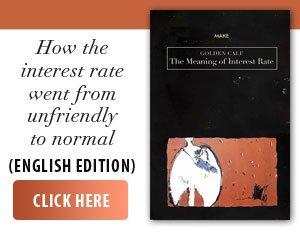The middle of the calendar spring, April, represented a fiery month for the Romanian economy, in light of the pressure put by the presidential elections scheduled for May 4 and 18, but also by the need to take legislative, fiscal and administrative measures to reduce the budget deficit, measures which, in the respective electoral context, were postponed until June. Therefore, the National Bank of Romania (BNR) maintained its firm position in April in the face of internal and external volatilities, preserving a prudent monetary policy in the face of inflationary uncertainties.
The budget execution for April brought positive news: the general consolidated budget expenditures decreased by 1 billion lei compared to the same month in 2024, standing at 71 billion lei, while revenues increased by 16%, reaching 59 billion lei. This advance was supported by more efficient tax collection, as well as the attractiveness of TEZAUR and FIDELIS government bonds, which brought record investments together of over 8 billion lei in the first four months of the year alone. Thus, the budget deficit for the first four months decreased to 2.95% of GDP, compared to 3.25% in the same period in 2024. In nominal terms, the budget deficit recorded by the Ministry of Finance at the end of April amounted to 55.97 billion lei.
According to the budget execution, at the end of April, total state budget revenues amounted to 199.92 billion lei, registering an increase of 9.4% (year/year), supported by the advance of current revenues - mainly the tax on salaries and income, insurance contributions and excise duties. Expressed as a share in GDP, total revenues increased by 0.2 percentage points, due to the increase in current revenues by 0.3 percentage points, while European funds decreased by 0.1 percentage points.
In contrast, the value of the consolidated general budget expenditures at the end of April was 255.89 billion lei, which means an increase of 6.6% compared to the same period of the previous year. Expressed as a percentage of Gross Domestic Product, expenditures for the first four months of 2025 decreased by 0.1 percentage points compared to the same period of 2024, from 13.6% of GDP to 13.5% of GDP. Of total state expenditures, personnel expenditures amounted to 56.55 billion lei, up 12.4% compared to the same period of the previous year. Expressed as a share of GDP, personnel expenditures represent a level of 3% of GDP, 0.1 percentage points higher compared to the same period of the previous year. Expenditure on goods and services was 30.53 billion lei, up 0.8% compared to the same period of the previous year. An increase is reflected in the budget of the National Single Health Insurance Fund of 5.4% for the settlement of medicines with and without personal contribution and medicines used in national health programs. Interest expenses were 20.42 billion lei, 6.64 billion lei higher than the same period of the previous year. Social assistance expenses were 85.62 billion lei, up 2.3% compared to the same period of the previous year.
Investment expenses, which include capital expenditures, as well as those related to development programs financed from domestic and foreign sources, were 32.41 billion lei, 3.61% higher than the same period of the previous year.
• Transforming fiscal framework
On the legislative level, April marked a series of important changes to the Fiscal Code, through an emergency ordinance adopted on April 3. The Government established a differentiated tax rate for special constructions, of 0.5% for those that are not public property and of 0.25% for those concessioned in the public domain. The measure also includes a 10% bonus for early payment until May 25. Facilities have also been introduced for the Ministry of National Defense and the education system, with the possibility of hiring seasonal staff and competitions for filling positions in nurseries financed by the PNRR.
Although political decision-makers have stated, both from the Victoria Palace and from the Victoria Palace, that there is a need to reduce budget spending, the Government launched several de minimis aid schemes in April. Some of these are addressed to agricultural producers (342 million lei for vegetables in protected areas, 1.5 million lei for farmers raising Bazna and Mangaliţa pigs).
At the same time, the Executive continued the policy of financing public investments, among which we mention the bypasses from Cluj and Baia Mare (9 billion lei, 3.2 billion lei respectively), drilling for the metro to Otopeni, the acquisition of 12 electric trains for Magistrala 4 (over 1 billion lei) and the expansion of the Rabla Plus program with eco-tickets of up to 7,500 euros. Also in the field of infrastructure, the government approved the project to modernize the Curtici-Simeria railway section (150 kilometers), an investment of over 13.5 billion lei, from European funds and the state budget.
Furthermore, the Government decided to establish a mechanism for granting advantageous loans from the Treasury to local communities that need financing exclusively to carry out European projects. The total amount that will be allocated from the state budget amounts to over 1.5 billion lei.
The need for financing led the Ciolacu government to contract a loan from the International Bank for Reconstruction and Development in April worth approximately 650 million euros, intended to refinance public debt and support fiscal reforms. In parallel, the Ministry of Finance issued new FIDELIS government bonds (third edition), attracting 1.34 billion lei between April 4 and 11, with an attractive interest rate of 7.6% for blood donors. Also in April, the Ministry of Finance issued new TEZAUR bonds, with subscription to be completed in May.
• BNR maintains the reference interest rate at 6.5%
Given this macroeconomic and financial situation, the Board of Directors of the National Bank of Romania decided not to change the monetary policy. Thus, in the meeting of April 7, the members of the NBR Board of Directors decided to maintain the reference interest rate at 6.5% and the rates for lending and deposit facilities at 7.5% and 5.5%, respectively. This decision reflects a fragile balance between persistent inflationary pressures and the need to support economic activity. The NBR made this decision in light of the fact that, although annual inflation decreased marginally, from 5.14% in December to 5.02% in February, it decreased less than anticipated by the central bank, given that the declines in the dynamics recorded over the first two months of the first quarter in the prices of food, tobacco products and fuels were largely offset by the acceleration in the increase in energy prices and administered prices. The NBR management also indicated that the annual adjusted CORE2 inflation rate resumed its decline during this period at a noticeably faster pace, as forecast, falling to 5% in February 2025, from 5.6% in December 2024, mainly under the impact of disinflationary base effects at the level of non-food subcomponents and the decrease in import price dynamics. Moderate opposite influences continued to come from the increase in the quotations of some agri-food commodities, as well as from increased wage costs, at least partially transferred to some consumer prices, including against the backdrop of high rates of short-term inflation expectations. The NBR also shows that in the first quarter of 2025 it noted a pronounced slowdown in economic growth, implying an annual GDP dynamics relatively similar to that of the previous quarter, in the context of divergent developments in the aggregate demand components and major sectors. The NBR argues that, for example, in January 2025, retail sales significantly decreased their annual growth rate, and services provided to the population decreased slightly compared to the same period last year, while the annual dynamics of the volume of construction works recorded a large jump, climbing well into positive territory, mainly as a result of major inflections in the residential and engineering construction segments. However, industrial production contracted in annual terms, and the annual variation in exports of goods and services recorded a significantly more modest increase compared to the fourth quarter of 2024 than that highlighted in the case of imports, so that the negative gap between them increased significantly. As a result, the trade deficit strongly accelerated its growth in annual terms in January 2025 compared to the fourth quarter of 2024, but the current account deficit moderated it considerably, under the impact of large inflows of European funds in the form of subsidies. Moreover, according to NBR data, the current account deficit increased to 4.8 billion euros in the first two months of 2025 compared to the current account deficit of 2.6 billion euros recorded in the similar period of 2024, against the background of the increase in the deficit in the balance of goods and the decrease in the surplus in services. Moreover, non-resident direct investments decreased to 1 billion euros, and total external debt increased to 208 billion euros.
• Administration and public sector reform governance of public enterprises
Faced with the European Commission's requirement that the milestone assumed by the PNRR regarding the corporate governance of public enterprises be implemented as quickly as possible, before the approval of payment request number 3, the Government adopted an emergency ordinance on April 8th by which it amended the legislation in this area, more precisely it amended the provisions of OUG 109/2011, establishing stricter selection criteria, limiting the accumulation of positions and imposing transparency in the appointment of directors and provisional administrators. For the first time, the obligation of quarterly reports on performance indicators was introduced, which will be published by AMEPIP. Gender priority was included in the case of equal scores, encouraging balanced representation on the boards of directors.
In order to increase the professionalization of management, express regulation was introduced regarding the graduation of higher education with a bachelor's degree, both for AMEPIP leaders and for members of the boards of directors and supervisory boards. The President and Vice-Presidents of AMEPIP must have at least a bachelor's degree and at least 10 years of professional experience in the economic or financial, management or legal fields, of which at least 7 years in executive management positions in companies or in management positions in public administration, where they exercised management or supervisory duties over public enterprises. In the case of members of the boards of directors and supervisory boards, they must have higher education completed with at least a bachelor's degree and experience in the field of engineering, economic, social, legal sciences or in the field of activity of the respective public enterprise for at least 7 years.
Another relevant amendment establishes that members of the board of directors will not be able to combine the quality of membership with that of employee of the public enterprise. If administrators are appointed from among the employees of the public enterprise, the individual employment contract will be suspended for the duration of the mandate.
The Government also approved an emergency ordinance that reduced the time required for institutions to issue construction permits, on average, by 50%. The regulatory act stipulates that the opportunity notice for PUZs will be issued within a maximum of 30 days, and in the case of investments financed from public funds, no fees are paid for the notice. The legal text establishes the obligation for the issuing institutions to issue the notices or submit a request for additions/modifications, once only, thoroughly motivated from a technical and legal point of view, within a maximum of 30 days for land use planning or urban planning, respectively 15 days for the construction authorization phase, from the date of submission of the request for their issuance by the beneficiary of the works. Exceeding the deadlines is considered tacit approval in the case of approvals/agreements both at the planning phase (production of territorial planning and urban planning documentation) and at the phase of issuing approvals and agreements necessary for authorizing the execution of construction works. If no observations are submitted or the urban planning documentation is not rejected with a well-founded justification, it is considered correct and complete after the expiration of the 30-day period, and the approval process can continue. Public authorities may request only one time completion of the documentation, and the approval is issued 15 days after the submission of the completed documentation or the documentation is rejected with a well-founded justification. In the event of failure to issue the approval within 15 days, or failure to issue a well-founded rejection of the documentation within the deadline, the documentation is considered correct and complete.



























































